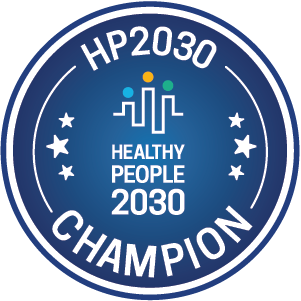Promising Practices
The Promising Practices database informs professionals and community members about documented approaches to improving community health and quality of life.
The ultimate goal is to support the systematic adoption, implementation, and evaluation of successful programs, practices, and policy changes. The database provides carefully reviewed, documented, and ranked practices that range from good ideas to evidence-based practices.
Learn more about the ranking methodology.
Filed under Evidence-Based Practice, Education / School Environment, Children
Goal: The goal of this program is to reduce youth violence and aggressive behavior by initiating prevention early in childhood, increasing children's resilience, and reinforcing positive behaviors.
Impact: One evaluation found that there was an 89% decrease in physical aggression and an 82% decrease in verbal aggression for participating students.
Filed under Effective Practice, Health / Children's Health
Goal: The goals of the Packard Pediatric Weight Control Program are to (1) help children improve their eating and exercise habits; (2) create a balanced diet; and (3) help participating children maintain or gradually lose weight.
Filed under Evidence-Based Practice, Health / Mental Health & Mental Disorders, Children, Teens
Goal: The Penn Resiliency Program is a depression prevention program that seeks to reduce the longevity of symptoms exhibited and the severity of symptoms at onset of depression, through cognitive-behavioral therapy and problem-solving techniques.
Impact: The Penn Resiliency program shows that a group-based program seeking to prevent the initial onset of and decrease the exacerbation of depression children and teens by incorporating specific coping and problem-solving skills can reduce depressive symptoms over time.
Filed under Good Idea, Health / Adolescent Health, Teens
Goal: The goals of Photovoice are for Clarkston High School students to 1) document community health-related strengths and challenges through participatory research; 2) reflect, think critically, and dialogue about their research; 3) present their findings persuasively to pertinent stakeholders.
Filed under Evidence-Based Practice, Health / Adolescent Health, Teens, Urban
Goal: The goal of the PATH Program is to improve knowledge of cardiovascular health and reduce risk factors associated with cardiovascular disease.
Filed under Effective Practice, Economy / Employment
Goal: Pioneer's mission is to improve the lives of people on the margins of society through and integrated array of services including housing, employment/training, treatment, counseling, and corrections.
Filed under Good Idea, Environmental Health / Toxins & Contaminants
Goal: The goals and benefits of piltess drilling include:
-elimination of unsightly and hazardous pits
-a decrease in the need for cuts in sensitive and hilly areas
-a reduction in total surface disturbance associated with a well pad
-elimination of the risk of waterfowl and wildlife mortality related to pits
-elimination of the risk of damaging underground pipelines and utilities
-virtual elimination of drilling waste
-reduction of water consumption by as much as 80%
-elimination of soil segregation, which reduces wind erosion problems
-reduction of truck traffic associated with transporting drilling wastes by as much as 75%
Filed under Good Idea, Education / Student Performance K-12, Teens
Goal: To reduce truancy in high school.
Filed under Good Idea, Environmental Health / Energy & Sustainability, Urban
Goal: The goal of plaNCY is to ensure a higher quality of life for New Yorkers, and reduce the city's greenhouse gas emissions by 30%.
Filed under Effective Practice, Economy, Adults, Urban
Goal: The program’s main focus was on moving welfare recipients quickly into the workforce.
Impact: There was a sizable increase in employment rates and job earnings, reduction in welfare dependency, and savings to the government.

